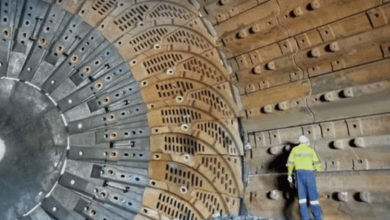Installing an EGR (Exhaust Gas Recirculation) delete kit on a 6.7 Powerstroke diesel engine can help improve performance and reduce maintenance, but it’s important to note that EGR delete kits may not be legal for on-road use in some regions due to emissions regulations. Make sure to check local laws and regulations before proceeding. Here’s a general guide on how to install an EGR delete kit on a 6.7 Powerstroke:
Materials You’ll Need:
- EGR delete kit (specific to your 6.7 Powerstroke model)
- Basic hand tools (socket set, wrenches, pliers, etc.)
- Replacement coolant and hose clamps (if necessary)
- New gaskets and seals (included in the kit or purchased separately)
- Safety goggles and gloves
Important Considerations:
- Disconnect the vehicle’s battery before starting any work to ensure safety.
- Consult your vehicle’s service manual for specific instructions and torque specifications.
- Perform this modification at your own risk, as it may void warranties or violate emissions regulations in your area.
Steps:
- Safety Precautions:
- Put on safety goggles and gloves. Ensure the vehicle is parked on a level surface with the engine turned off, and the battery is disconnected.
- Locate and Access the EGR System:
- The EGR components are typically located near the intake manifold and consist of the EGR valve, EGR cooler, and associated piping. Access these components by opening the vehicle’s hood.
- Identify the EGR Valve:
- Locate the EGR valve in the EGR system. It’s usually a cylindrical or rectangular device with electrical connectors and hoses connected to it.
- Remove EGR Valve:
- Use a socket or wrench to remove the bolts or nuts securing the EGR valve to the engine. Once removed, carefully disconnect the electrical connectors and hoses attached to the valve.
- Install Block-Off Plate or EGR Delete Pipe:
- Depending on the kit you have, you’ll either install a block-off plate to cover the EGR valve opening on the intake manifold or replace the EGR valve with an EGR delete pipe. Follow the kit’s instructions for this step.
- Remove the EGR Cooler (if applicable):
- If your kit includes removing the EGR cooler, disconnect the coolant hoses and remove the cooler from the vehicle. Install any provided block-off plates or plugs to seal the openings in the coolant system.
- Replace Gaskets and Seals:
- If your kit includes new gaskets and seals, replace the old ones on the EGR system components, ensuring a proper seal.
- Reconnect Components:
- Reconnect any electrical connectors and hoses that were disconnected earlier, securing them according to the kit’s instructions.
- Refill Coolant (if necessary):
- If you removed the EGR cooler and coolant hoses, refill the cooling system with fresh coolant as per the vehicle’s service manual.
- Battery Reconnection:
- Reconnect the vehicle’s battery.
- Start the Engine:
- Start the engine and check for any leaks, unusual noises, or warning lights on the dashboard. Monitor the vehicle’s performance to ensure it runs smoothly.
- Clear Error Codes (if necessary):
- If any error codes or warning lights appear on the dashboard, you may need to use an OBD-II scanner to clear them.
- Test Drive:
- Take the vehicle for a test drive to ensure everything is functioning properly. Monitor engine performance and exhaust emissions.
Please note that EGR delete kits are intended for off-road or racing use only in many areas due to emissions regulations. Removing the EGR system may also affect the vehicle’s warranty. Always consult with a qualified mechanic or shop that specializes in diesel engines to ensure the work is performed correctly and that your vehicle complies with local regulations.
Also Read:
https://infusionpost.com/how-to-increase-willpower-deepwoken/
https://infusionpost.com/how-to-induce-labor-in-goats-naturally/
https://infusionpost.com/how-to-inflate-intex-hot-tub-without-hose/



